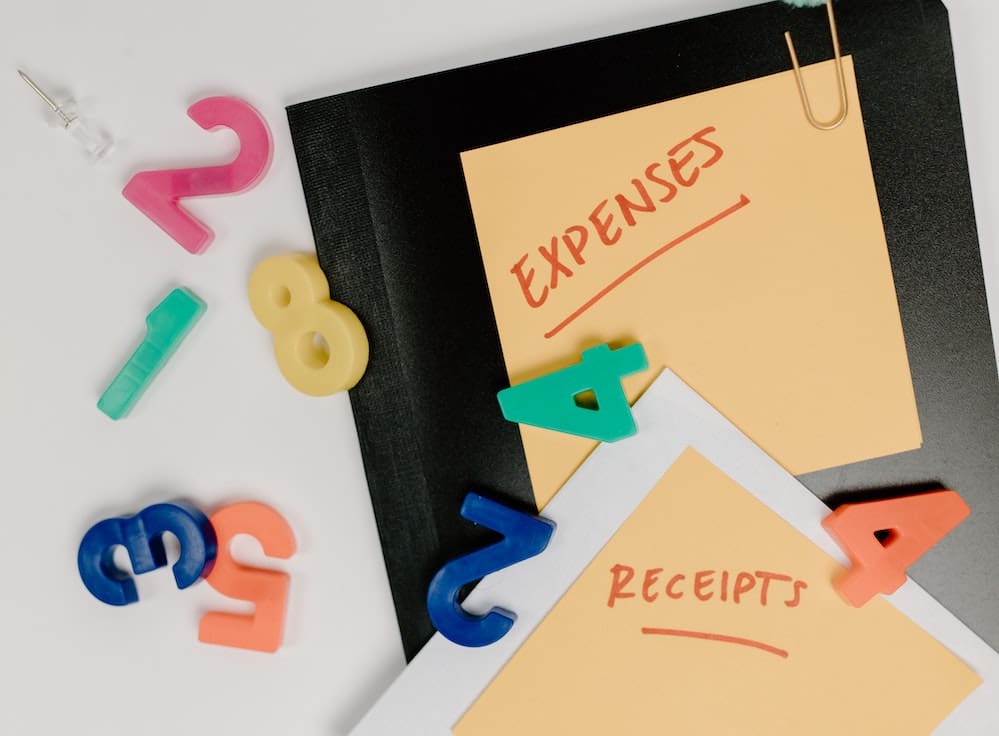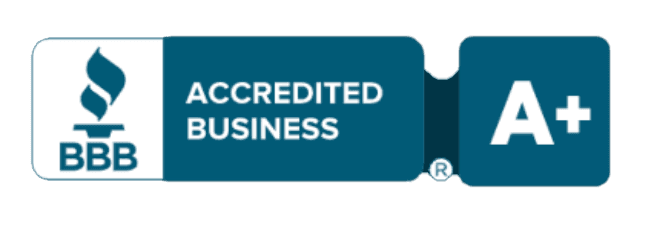What Accounts Are Debit and Credit?

Most business owners understand that they need to keep track of their income and expenses but many get tripped up when figuring out what accounts are debits and credits. By getting a firm grasp on the concept of debits and credits, you’ll have a leg up when it comes to completing your accounting accurately. Debits and credits are used in double entry accounting to ensure that everything balances out at the end of the accounting period. With it, you record each transaction as a debit and a credit, hence the name double entry accounting. Because you are accounting for all movement of funds, you get a clear picture of your financial standing. At any point, the total of the entries on the left side of the trial balance (debits) will equal the total of the entries on the right side (credits). A trial balance includes all accounts from the balance sheets and profit and loss statements. It also acts as a proof sheet for the books. Any difference between the totals on the right and left side means that there is an error in the books that should be investigated. In this guide, we’ll go over the basics of bookkeeping—what accounts are debits and credits and how to record them in your books. What Are Debits and Credits? In accounting, debits and credits are used to record financial transactions. A debit is an entry on the left side of an account, while credit is an entry on the right side of an account. Debits and credits will increase and decrease account balances differently depending on the type of account, which we will look at more closely below. In double-entry bookkeeping, each financial transaction is recorded as both a debit and a credit. For example, when a company purchase supplies on credit, the transaction would be recorded as a debit to the supplies account and a credit to the accounts receivable account. You also use a chart of accounts, that includes items like rent, utilities, payroll, and more. It helps you organize and index all your accounts and transactions, usually in a chart format. While debits and credits may seem confusing at first, they provide a valuable way of tracking financial transactions. By understanding how debits and credits work, you can gain valuable insights into your business’s financial health. What Is the Difference Between a Debit and a Credit? In accounting, there are two fundamental types of transactions: those that result in a decrease in assets or an increase in liabilities (debits) and those that result in an increase in assets or a decrease in liabilities (credits). The key difference between debits and credits lies in their effect on the accounting equation. Assets = Liabilities + Equity A debit decreases assets or increases liabilities, while a credit increases assets or decreases liabilities. In other words, debits always reduce equity while credits always increase it. For this reason, debits are sometimes referred to as “drawings” while credits are called “investments.” At the end of the day, it all comes down to simple math: whatever is not an asset must be a liability or equity. If you want to increase your assets without also increasing your liabilities, you need to find someone willing to invest in your business (i.e., give you a credit against an outstanding invoice). If you want to decrease your liabilities without also decreasing your assets, you need to find someone willing to invest in your business. The goal is always to keep the accounting equation in balance. How Do You Record Debit and Credit in Your Books? When you’re keeping your own books, it’s important to understand how to record both debits and credits. At its most basic, a debit is an entry on the left side of a ledger, indicating an increase in assets or a decrease in liabilities. A credit is an entry on the right side of a ledger, indicating a decrease in assets or an increase in liabilities. In order to keep track of your finances, you need to be sure to enter both types of entries into your bookkeeping system. There are a few different ways that you can do this. One option is to create two separate ledgers, one for debits and one for credits. Another option is to use a software program that will automatically keep track of both types of entries. Whichever method you choose, be sure to keep accurate records so that you can always know where your money is going. Most accounting software forces you to keep your books in balance because it will not allow you to save an entry that doesn’t have equal credits and debits. Types of Accounts and How They Are Recorded There are several groups of accounts that are included in your financial statements. Debits and credits will affect each account differently. Assets When you debit an asset account, it goes up, and when you credit it, it goes down. That’s because assets are on the left side of the balance sheet, and increases to them have to be entries on the right side of the ledger (i.e., debits). On the other hand, decreases have to be entered on the left side (credits). So if you’re adding cash to your checking account, that’s a debit to the account (increasing its value), but if you’re writing a check, that’s a credit (decreasing its value). The same goes for your other asset accounts: inventory, investments, etc. The reason this is important to understand is that it will help you keep your books in balance. If you don’t debit and credit the accounts correctly, your books will be out of balance, and you won’t be able to prepare accurate financial statements. Liabilities When you debit a liability account, you’re increasing the amount of money that the company owes. For example, if you debit Accounts Payable, you’re decreasing the amount of money that the company owes to its suppliers. On the other hand, if you credit a
Types Of Small Business Financing You Need To Know About

Small business financing is vital as it can make or break your business. When first starting, there are many factors that you need to consider, such as your business plan and your financing options. When creating your business plan, it should outline your goals and objectives to have a clear idea of how to implement your plan. It’s important to plan ahead so you don’t miss any crucial steps that will bring on more than necessary. In this blog post, we will help you navigate the different types of financial assistance options to give you more insight into what could be a good fit for you. When it comes to financing, it’s important to ensure that you’re choosing the right option for your business. Starting a small business isn’t easy and comes with many challenges, but if you take the right steps in the planning stage, it’ll make the process go more smoothly. Without the right financing, getting your business off the ground may be hard because you won’t have enough support behind your idea. There are many financing options available, but it’s up to you to find the one you feel will work the best. Some options to fund your business include a small business loan, personal financing, or even a home equity line of credit loan. Types of Financing Options A small business loan can be a good option when looking for some additional financing while keeping in mind small business loans have a long list of requirements that have to be met to qualify for the loan. Cross-check the qualifications beforehand, and if all the requirements are met, it could be a good option for you. If you have been running your business for a while but are trying to qualify for a small business loan, the lender may ask to see a recent balance sheet of your business. It’s important that when applying for a small business loan, you understand the information that you’ll have to present. Financial statements are one of the many requirements needed to qualify, so it’s important that you understand how to read your financial statements so that you will be able to discuss the information with the lender. If you don’t want to look to outside sources for financing assistance and feel that you have the ability to invest in it yourself, then personal financing may be the best choice for you. Personal financing loans are guaranteed through your personal credit history. This often makes them easier to get approved for than a small business loan if you have good credit, which might look at both a personal and business credit score. For homeowners, another viable option is taking out a home equity line of credit loan. This type of loan allows you to borrow money against the equity you’ve built in your house. You receive the funds as a line of credit, so you’re able to access additional financing for your business as needed. This could be beneficial as it can be easier to qualify for than other loan options. Keep your Finances Up to date In addition to securing the proper financing, it’s important to make sure that you’re keeping your financial history up to date. Managing your finances plays an important role in your business, as being financially sound from the beginning will set you up with a good foundation. While it’s important, it can become difficult to manage if you’re not taking the time to consistently review and record all financial activity. You must be diligent about reviewing your finances to ensure you’re not missing or falling behind on any payments. If you let this aspect of your business fall by the wayside, it’ll be overwhelming to catch up while simultaneously running your business. In order to run a successful business, you need to make sure that you’re paying attention to all aspects, financials included. If you’re feeling overwhelmed and concerned about managing everything on your own, it may be beneficial to look at outsourcing opportunities. Outsourcing functions of your business, such as bookkeeping, will give you time back in your day to focus on running your business while allowing an online bookkeeper to assist you with the more time-consuming tasks. With the help of an online bookkeeper, they can help to keep your finances up to date so that you don’t have to worry about falling behind or missing payments. Ensuring that all aspects of your finances are taken care of will help you to get your business started on the right track and help you to focus your efforts on the growth of your business rather than worrying about its financial state.
5 Reasons You Shouldn’t Wait to Catch Up on Bookkeeping

Running a business is, without a doubt, a challenging task that requires a lot of commitment, effort, and attention to detail. Did you know 82% of small businesses fail due to cash flow management? Besides managing all aspects of the business, taking care of your books is crucial to achieving financial success while being tax ready all year round. At xendoo, we know you didn’t start a business to do the accounting and taxes; but we did. In this blog post, we’ll explore the necessity of catching up on your bookkeeping and how it will benefit your company. To start, let’s look at why keeping your books up to date year-round will help your business. 1. Avoid an audit Filing your business taxes on time, will avoid hefty fines or legal action and keep your financial health in good shape. Even if you can’t pay in full, the IRS will work with you. By staying on top of your bookkeeping, you avoid further issues and stay on good terms with the IRS and other regulatory agencies. 2. Obtain a business loan Consistent bookkeeping also makes it easier to obtain a business loan and improves the application process. Up-to-date financials give you a clear picture of your loan needs, so you know how much funding you need. Lenders want a solid financial history and a clear picture of your current financial health. That way, you increase your chances of securing the funding you need to grow your business. 3. Avoid costly mistakes Consistent bookkeeping helps you avoid mistakes such as: Heavy inventory Inaccurate invoices Predatory lending options Accounts receivable and accounts payable errors An online bookkeeping service that provides 24/7 access to financial experts and reporting all year will alert you to mistakes quickly and even prevent them. It can also help you make objective business decisions that contribute to your success. 4. Identify fraud and errors Keeping your financial records up-to-date can help you identify potential fraud or errors. Regularly reconciling your bank accounts, credit card statements, and invoices can help you quickly catch any discrepancies and take appropriate action to rectify them. Doing so can protect your business’s financial integrity and prevent losses due to fraudulent activities. 5. Focus on growth, not your bookkeeping Now that you’ve secured funding for that second location (or that expansion) and got caught up on your books, you can focus on growth. When your books are in order, you can devote your time and energy to other business areas, such as marketing, sales, or product development. xendoo makes a great partner whether you need help getting caught up or staying up to date on your bookkeeping. Achieve financial peace of mind with up-to-date bookkeeping and enjoy the benefits of a healthy and thriving business! For more benefits about keeping your books current and staying on track with your business needs, visit this article.
Best business banks of 2023

The biggest rule of thumb when running a company is to keep your personal and business finances separate. To do that, you need to choose the best business bank for you, which may not be the same one you use for your personal finances. Business bank accounts have different terms and benefits than personal accounts. As an online accounting service, xendoo works with many companies and business banking services. The best business bank for you depends on your particular needs. But there’s much more to consider. Some banks are stronger in commercial lending, while others have stronger lines of credit. We’ll compare the best business banks and their features to help you decide which options are right for you. Review each bank’s rates and services to determine which suits your needs. How to choose a bank for your business Choosing a bank is a big decision in your business journey. However, there’s no one-size-fits-all business banking solution. Factors like your monthly revenue, number of cash payments, and company structure (LLC, S corp, C corp, etc.) will influence which features you need most. You may also want to get startup funding or a loan from the same place you do your banking. Although these factors may vary, there are some criteria all companies should look at when choosing a banking partner. Here are the features we looked at to evaluate the best business banks. View-only access, wires, and online banking As a baseline, all business banks must have robust technology to support VOA (view-only access), wires, and online statements. You can share view-only access to your bank statements with bookkeepers, accountants, and other trusted financial partners. They’ll only be able to view, not make changes to, the data they need to record and manage your finances. Fees and costs Some banking services come with fees and financial requirements that might not be obvious at first. Common banking fees include: Opt for a bank that provides transparency in its fee structure and offers the best value. Annual Percentage Yield (APY) In simple terms, APY is how much an account can earn in a year through interest. However, it’s not the same as interest rate because it also includes compound interest. For example, let’s say you open an account with 1% APY and your first deposit or principal balance is $20,000. Then, every month you deposit another $20,000. Instead of only earning interest on the original amount, compounding interest factors in the updated account balance. In-person locations If you run an online business and rarely have cash transactions, a bank with in-person locations might not be a priority for you. Instead, it might be more convenient to look for online banking solutions. If you have cash transactions, which is common with franchises, retail stores, and restaurants, physical bank locations are more important. You might need to make frequent cash deposits and prefer in-person service. 10 Best business banks Whether you’re considering switching banks or starting a business checking account for the first time, you can compare features, fees, and more below. 1. Wells Fargo Best for: Companies that want loans, business checking, and in-person banking. Wells Fargo is one of the oldest banks in the United States. However, its reputation has taken some hits in recent years. But, that also means that it is under heavy scrutiny from regulators and is focused on regaining consumer trust. Overall, Wells Fargo has a huge physical presence, which might be a fit if you value in-person banking. But, its past actions and high fees for overdrafts, transactions, maintenance, and more make it less than ideal. Pros Cons Physical locations in over 40 states High monthly fees and other costs You can open an account online No free checking accounts 2. Chase Best for: Companies of all sizes that want a wide range of business and personal financial services (checking, savings, financing, mortgage, etc.) Chase offers many types of business banking accounts to suit different business sizes and needs. Let’s take a closer look at each in the comparison below. Business Complete Banking Performance Business Checking Platinum Business Checking Monthly fee $15 (waived with $2,000 minimum balance) $30 (waived with a $35,000 minimum average balance) $95 (waived with a $100,000 minimum average balance) Minimum deposit requirement Not available Not available Not available Transaction limit 20 250 500 Deposits Unlimited electronic $5,000 free cash deposit limit Unlimited electronic$20,000 free cash deposit limit Unlimited electronic $25,000 free cash deposit limit APY No No No Member FDIC Yes Yes Yes Chase has locations in over 29 states and over 16,000 ATMs. It might be convenient if you need in-person banking and already have a personal banking account. If you have a lot of monthly transactions or don’t want to worry about banking fees, then Chase isn’t the best business bank for you. Pros Cons Multiple checking account options to suit different business needs Monthly fees, but they are waived if you meet the account balance threshold Wide network of branches for in-person service No APY for business checking 3. Bank of America Best for: Businesses that have large, monthly cash deposits and need in-person services. Bank of America has two business banking accounts: Fundamentals and Relationship. The Fundamentals account is more suitable for small-to-medium businesses while Relationship is for larger enterprises. Each account has various fees and requirements. Here’s the breakdown for the Fundamentals account: Pros Cons One of the largest and most established banks Complicated monthly fees and requirements can mean more expensive banking costs Branches and ATMs all over the country for in-person banking and cash deposits 4. Mercury Best for: Growing global and online-only startup businesses. One of the reasons why xendoo partners with Mercury is that it’s tech-enabled banking at its finest. Compared to traditional banking platforms, it has an incredibly, user-friendly interface. It has an API, so businesses can integrate other financial tools and services they use. For example, you can connect bookkeeping, payments, payroll, and more to your Mercury business banking account.
Steps to Clean Up Accounting Records: A Checklist

Taking steps to clean up accounting records can be a big undertaking for small business owners. Hopefully, you started your business on the right foot financially. You may diligently record your accounting transactions or have hired someone to take care of accounting for you. If that is not the case, you will need to take steps to clean up accounting records or use a catch-up bookkeeping service. When and Why You Need to Clean Up Your Books There are many reasons to have clean accounting books each month. Here are a few: Ensure Financials Are Up-to-Date If you don’t know where you stand with accounts receivable, accounts payable, or cash accounts, you won’t be able to make strategic business decisions. Clean bookkeeping means you don’t have to keep track of the client who is 90 days overdue on their payment or anticipate what your cash flow position will be next week. You also won’t need to worry about manually tracking expenses. A virtual bookkeeper can help you automate that and more. Be Ready for Tax Season No one enjoys tax season (not even accountants), but paying taxes is a required part of keeping your business tax compliant. If you don’t have accurate records, you may miss out on deductions or income on your tax returns. This oversight could lead to a higher tax expense than required or an incorrect tax return. Ensure Compliance for Fiscal Year-End or Financing Opportunities If your company requires a set of reviewed or audited financial statements, you’ll need a clean set of books. During a financial review or audit, accountants will ask to see documentation of expenses and income. They may perform other accounting activities to assess your level of financial controls in the company. While most small business owners won’t need to undergo yearly financial reviews, these reviews can provide additional support for financing opportunities. Most banks or other commercial lenders require a financial review before providing financing. If the IRS decides to audit your business tax return, having an accountant-reviewed set of financials can be very helpful in resolving any issues. What Documentation Should You Have? Any transaction that involves a purchase, sale, or other financial change should be well-documented. Documentation may include a receipt, invoice, bank statement, or another item, such as a lease. Frequently, accounting software will allow you to upload support for any transactions recorded in your general ledger. You should take advantage of this as much as possible. You may also save paper copies of documents — just make sure to keep them organized! Warning Signs That You Need to Clean Up Your Books There are several indications that an accounting clean-up may be required. If you see any of these signs, it is time to take steps to clean up accounting records. Inconsistencies in Financial Statements Hopefully, you review your monthly financial statements for accuracy. You may compare your cash account and lines of credit with your bank statements, take a balance sheet health check, and check your income statement. If you notice strange variances or differences in your cash or credit card balance, it’s time to check your books for mistakes. Inventory Levels that Don’t Align If your company has inventory, you will need to account for it in your general ledger. Frequently, companies will perform a physical check of inventory and compare it to accounting records. If you notice differences, something may be wrong. There could have been inventory stolen or sales may not have been recorded in the ledger properly. Overspending on Business Expenses Sometimes business expenses may appear too high. If you’re aware of your monthly expenses and they appear to be abnormally high on your income statement, a transaction may have been booked twice or booked to the wrong account. Incorrect Accounts Payable or Receivable Reports A big part of the accounting process is to check your outstanding accounts payable and accounts receivable for small business reports. These reports may be incorrect if you haven’t accurately recorded a collection, payment, sale, or expense. In the end, it will lead to missing income or expenses in your books. Over or Undervalued Assets A business that owns fixed assets will need to record its depreciation each month. If the company sells or purchases additional assets, other entries must be made. Upon reviewing your balance sheets, you should note if the value of your assets appears incorrect. Missing Retained Earnings Retained earnings are an important piece of the balance sheet. They consist of all profits and losses from prior years, plus income or loss for the current year. If you compare the income statements for all periods that your company has been open, this total should match the net profit and retained earnings balance on your balance sheet. If it doesn’t, you have a problem. Hiring an Accountant to Clean Up Your Records If you see mistakes in your accounting ledger, it’s time to hire an accountant to help you sort out your financial reporting. An experienced and knowledgeable accountant can reconcile balance sheet accounts and examine your income statement for inconsistencies. They can also review details from prior years to ensure that your retained earnings are correct. Significant prior-year errors may affect your previous tax returns and financial statements. As an example, missed sales or expenses can change your taxable income. Errors could result in additional tax you should have paid or more of a refund. If you find these mistakes, you will have to file an amended tax return. While there are costs associated with hiring someone to help you with your accounting processes, the expense is well worth it. It saves time, gives you peace of mind, and allows you to make better business decisions with accurate information. How xendoo Can Help You Clean Up Your Accounting xendoo offers a clean-up bookkeeping service that can assist you with getting your finances up to date. Learn more about our services today!
A Guide to the Chart of Accounts With Examples

Every business should have a chart of accounts. If you’re wondering what exactly that is, we have you covered. We’ll explain everything you need to know and include an example chart of accounts below. Note, if you use xendoo for your accounting, we can set up and maintain your chart of accounts for you. What Is the Chart of Accounts? A chart of accounts is a list of all the accounts and financial transactions for your business in one location. It is like a table of contents for your accounting system. Accountants and business owners use the chart of accounts to organize how they make and spend money. By categorizing financial transactions, you can more easily create statements like balance sheets. Additionally, it shows you the big picture of your financial health and day-to-day operations. Chart of Accounts Types As an example, a chart of accounts is usually organized into five main categories: Assets Liabilities Equity Expenses Revenue You or your accountant will use these account types to create a balance sheet and income statement. The balance sheet includes assets, liabilities, and equity accounts. On the other hand, the income statement includes revenue and expense accounts. Balance Sheet = Assets + Liabilities + Equity Income Statement = Revenue + Expenses Balance Sheet Chart of Accounts Asset Accounts Assets are resources a company owns and can use to produce value. These resources may be intangible assets like software or current assets like petty cash. Other examples of assets: Accounts receivable Equipment Buildings Land Vehicles Liability Accounts In general terms, liabilities are what your business owes. Transactions in a liability account include: Accounts payable Accrued expenses Taxes payable Customer deposits Equity Accounts Equity is the amount you have after deducting your liabilities from assets. The term equity is also used to describe a company’s value to shareholders. It makes sense then that equity in a chart of accounts includes the following: Common stock Retained earnings Preferred stock Income Statement Chart of Accounts Expense Accounts Expenses are all the costs you incur in your business, whether it’s paying utility bills or employees. Other examples of common expenses include: Advertising Bank fees Rent Utilities Travel You’ll want to consider a business expense tracker to record and manage your expense accounts. It can also come in handy and save you money with business tax deductions. Revenue Accounts You record from selling products or services in revenue accounts. Revenue also includes investment income and sales returns. How Does the Chart of Accounts Work? Depending on your business, an example chart of accounts might be organized into specific columns that include: Reference numbers (Codes) Account name Account type When recording transactions in the charts of accounts, you assign reference or account numbers to entries. The number tells you which account a transaction belongs to based on the number’s first digit. If it begins with one, it is an asset transaction. Those that start with two, three, four, and five represent liability, equity, revenue, and expense transactions, respectively. For instance, asset accounts range from 100 to 199 while liability accounts are between 200 and 299. The account number in the chart of accounts varies with every business. Some charts of accounts use four digits instead of three, but the first digit remains the same. You can use four-digit codes—assets (1000 to 1999) and liability accounts (2000 to 2999). You may also have a cost of goods sold (COGS). In that case, it is typically recorded with numbers starting with a five, and expenses are recorded starting with a six. Before there was accounting software, accountants used this coded method to organize the chart of accounts on paper. Most accounting software technologies automatically assign numbers (codes), making the entire process seamless. Accounting software also minimizes manual data entry by balancing your debits and credits for you. Chart of Accounts Examples The following examples illustrate how a fictional business—XYZ—might record transactions in its chart of accounts. Transaction 1: A business XYZ withdraws $600 from its bank account to buy a heavy-duty printer. To accurately record the transaction, the business must credit $600 to their cash account and debit $600 to the equipment account. Transaction 2: XYZ uses $2,000 to pay rent. In the chart of accounts, XYZ will credit $2,000 to the and debit $2,000 to the expense account for rent. Transaction 3: The business owners in XYZ limited company bring in cash of $200,000 as additional capital. The business will credit the equity account and debit the cash account in the chart of accounts. Here’s a sample chart of accounts to give you a typical overview. Keep in mind that it is not exhaustive. Your chart of accounts will likely have slightly different codes and more accounts listed. Account Number Account Name Type Financial Statement 1010 Cash Asset Balance Sheet 1200 Accounts receivable Asset Balance Sheet 1500 Office Equipment Asset Balance Sheet 2010 Accounts payable Liability Balance Sheet 2020 Sales tax payable Liability Balance Sheet 3010 Additional capital Equity Balance Sheet 3030 Retained earnings Equity Balance Sheet 4010 Sales Revenue Income Statement 5010 Raw material Cost of Goods Sold Income Statement 6010 Advertising fees Expenses Income Statement 6020 Bank fees Expenses Income Statement 6030 Bad debt expense Expenses Income Statement How Do You Update the Chart of Accounts? The rules for updating your chart of accounts are straightforward. Add new accounts throughout the year but wait till the year ends to delete old accounts. If you delete, merge, or rename accounts before the year ends, you can face troubles during tax season. You must make a double entry each time you record a transaction in the chart of accounts. Double-entry accounting is when you debit one account and credit another. The sum of the two entries must always be zero. Suppose you own a hardware store and sell $1,000 of tools. You would debit the cash account $1,000 and credit the revenue account $1,000 on the charts of the account. You should also leverage accounting software like
How Do I Pay Myself and My Taxes as a Partnership?

Every partnership owner faces the unique challenges of self-payment, tax filing, and maximizing their tax savings. Although they would rather focus on growing their business, taxes and payroll often take up too much of their valuable time. If the self-payment struggle is all too familiar to you, xendoo is here to help. We have created this guide to help you pay yourself and maximize your savings as a partnership owner! How to Pay Yourself as a Partnership Owner: The Owner’s Draw or Guaranteed Payments Partnership owners pay themselves by taking an owner’s draw or a guaranteed payment, with profits distributed to each member based on the partnership agreement. Note that partnership owners are not permitted to take a salary, as the IRS states that you cannot be both a partner and an employee. The Owner’s Draw An Owner’s Draw differs from a regular salary in that you can take money from the company’s earnings as needed, rather than on a scheduled basis. Depending on how well your business is performing, you can draw more or less, allowing for flexibility in your payments. If your business is profitable, subtract liabilities (any debt your company owes) from assets (items of value the company owns). The remaining amount is referred to as ownership equity, which is what you will take your draw from. This amount is reflected on the Balance Sheet, under Owner’s Equity. Once you determine the amount you want to take, it can be transferred from your business bank account to your personal account. Because the Owner’s Draw is taken from ownership equity, it reduces the funds that can be used for operating or growing the business. Partnership members must balance how much they need to support themselves and what the business needs to thrive. Guaranteed Payments What if your business is in the early stages, and not producing profit yet? The solution lies in guaranteed payments. Guaranteed payments are a minimum amount that is guaranteed to be paid to a partner regardless of business profitability. The payments must be made even if the result is a loss for the business. They provide a consistent income to partners as the business grows and becomes profitable. Note that if the business is operating at a loss and providing guaranteed payments to partners, that loss must be funded through debt or investments (equity) to ensure that the necessary expenses of the business can be paid. Discuss your options with an online partnership accountant at xendoo. They will provide the financial insight needed to make the most informed decision regarding self-payment in your partnership! How Do I Pay My Taxes as a Partnership Owner? Partnerships file their taxes using Form 1065, which determines that each partner is reporting their income correctly. Each partner must complete an accompanying Schedule K-1, which breaks down their share of the profits and losses. They also report this information on their individual tax return (Form 1040), with a Schedule E attached. The owner’s draw is not subject to payroll taxes, but it is considered personal income and is taxed accordingly. If partnership members take the owner’s draw, they must pay estimated taxes, which helps decrease their tax bill. Guaranteed payments are tax-deductible to the partnership, and are treated as self-employment income for the partnership members. They are reported on the Schedule K-1, and noted as income on the Schedule E. If the partnership members choose to take guaranteed payments, they will pay both income tax and self-employment taxes as individuals. What are the Tax Advantages of Filing as a Partnership? No Double Taxation The partnership itself does not pay income taxes. Partnerships are considered “pass-through entities”, meaning that profits and losses “pass through” the business to the partners, with each paying a portion of the total income tax of the business’s earnings. In this situation, profits and losses are only taxed at the personal level, which allows partnerships to avoid double taxation. Even with a significant tax advantage, taxes can still be stressful. Talk to a small business CPA at xendoo. We provide online accounting for partnerships, as well as online bookkeeping services so you can stay tax-ready all year long. xendoo is Here for You You are not alone as you navigate self-payment, tax filing, and all the financial ins and outs of your partnership. xendoo is here to help! Our online bookkeeping and accounting team provides partnership owners with the financial insight needed to make the most informed decision regarding self-payment and partnership taxes! Are we a fit for your partnership? Get started today with a free consultation. Want to learn more about the different business entity types? Click here.
Year-End Bookkeeping and Accounting Checklist for Small Business Owners

The end of the year is a hectic time for small business owners. Between catching your breath after tax season and managing holiday sales, year-end bookkeeping and accounting tasks understandably fall to the bottom of the to-do list. xendoo is here to help you avoid the year-end scramble. Check out our year-end bookkeeping checklist to organize your finances and successfully wrap up the year. 1. Get Your Books Caught Up The first step is to make sure that your books are up-to-date. You can do this by: Accounting for all bills and invoices, even if they haven’t been paid yet. Reviewing bank and credit card statements to confirm that they match. Recording any expenses that you paid for with personal funds. Accurate records ensure reliable financial statements. If your books are behind a few months, or even years, you are not alone—25% of business owners are behind on their books. xendoo’s online bookkeepers provide catch up bookkeeping services, so you can focus on the future. 2. Collect the Necessary Forms Once January arrives, your accountant will request certain forms to close your books and file your small business taxes. Be sure to collect them as soon as possible to ensure a smooth start to the new year. Here are common forms and their deadlines. Form W-2 Business owners use form W-2 to report salary information for their employees. It also helps businesses report the taxes they withhold from paychecks. Employees need this information to file their personal tax returns. Business owners are responsible for sending this form to the IRS. Employers must provide the form to their employees no later than January 31st so that employees have enough time to file their taxes. Form W-9 If you worked with an independent contractor or vendor and paid them $600 or more, you will report those payments to the IRS using Form 1099-NEC. The information you need to complete this form is on Form W-9, which you can collect from your contractors. If any W-9s are missing, reach out to your independent contractors and have them complete the form before the end of the year. Schedule K-1 CPAs provide the Schedule K-1 or Form 1065. The Schedule K-1 must be sent to shareholders and partners by March 15th. S-Corporation shareholders and partnership members use it to report their share of the business’s profits and losses. They’ll also include the form with your personal tax return. Form 1099-K The 1099-K tracks the payments received through third-party payment networks, like eBay, Stripe, Shopify, PayPal, and others. You should receive one 1099-K from each of the Online Payment Networks you use by January 31st. You are required to complete each one. Your gross receipts must be at least as high as the amount that you report on your 1009-K. The 1099-K shows gross sales, which is the amount before fees are deducted. What appears in your bank account is the Net Amount, the amount after fees are deducted from the Gross Amount. The sales from each vendor must be reported as the Gross Amount, which is what appears on the 1099-K. If you use freelancer platforms like Upwork or Fiverr to hire independent contractors, they may also send 1099-Ks to your freelancers instead of 1099-NECs. Since they are considered Online Payment Networks, these platforms typically send 1099-Ks to freelancers that make over $20,000 a year and have at least 200 transactions. However, if you paid freelancers more than $600 outside of their platforms, then you will need to send out a 1099-NEC. Click here to download our Tax Documentation Checklist. 3. Follow Up on Past-Due Invoices Review past-due invoices to see what you are owed. If there are any outstanding payments, reach out to your customers before the end of the year to successfully close your books. 4. Account for Inventory If your business stores inventory, perform an end-of-year inventory count to make sure your totals match your Balance Sheet and your books. This review will provide insight into waste and loss management, as well as reduce inaccuracies in inventory counts and receivings. Consider utilizing inventory management software to streamline inventory creation and order fulfillment. 5. Review Your Financial Statements Once you or your bookkeeper completes your bookkeeping, review your financial statements to confirm your numbers are correct. You can also take that time to review how your business grew over the course of the year. Was there a steady increase in profits? Can you identify connections between your costs and sales? The financial statements provide visibility to confirm that you are on track to meet your goals, make projections, and prepare for the future. Click here to learn more about the key financial statements. 6. Reach Out for Help Everyone deserves a supportive team of people who care. If you feel overwhelmed with year-end bookkeeping, reach out to an online bookkeeping service. xendoo’s bookkeeping and accounting team provides monthly bookkeeping and accurate financial reports. We’ll give you financial visibility throughout the year and deliver insights to make strategic business decisions. Ring In Success Juggling the holidays with running a business can be hectic. Although this year-end bookkeeping and accounting checklist can help you prepare for tax time, you don’t have to do it alone. xendoo has a range of plans with flat monthly fees. You can get certified, professional online bookkeeping, accounting, tax, or CFO services to help you manage your finances and grow your business. Schedule a call with one of our online accountants to get started.
What Is Catch-Up Bookkeeping?

When you get behind in your books, you have two choices: lose sleep or turn to a catch-up bookkeeping service to help you out. What is catch-up bookkeeping? Catch-up or “clean-up” bookkeeping is the method of bringing your financial records up to date. In other words, catch-up bookkeeping lets you spend less time worrying about the past and more time focused on the future. Let’s take a quick look at what you can expect from a catch-up bookkeeping service. How Catch-Up Bookkeeping Is Different from Ongoing Bookkeeping Most business owners already have some sort of bookkeeping strategy in place, which might involve recording income and expenses as well as saving receipts and documenting expenses in preparation for tax season. These ongoing bookkeeping strategies are intended to keep pace with the normal flow of business. How is this different from catch-up bookkeeping? Catch-up bookkeeping operates as an emergency solution when you get behind in your ongoing bookkeeping efforts. Catch-up bookkeeping attempts to look back through the past several months, record income and expenses, and bring your books completely up-to-date. Catch-up bookkeeping services can also provide some strategies to keep you from getting behind on your books in the future. The Core Steps of Catch-Up Bookkeeping Some business owners try to get books caught up on their own. But if you got behind in your books because you lacked the time to do your accounting properly in the first place, how will you find the time to get caught up? Instead, it might be a good idea to rely on an experienced CPA or tax professional to review your books. These financial professionals can then help you to do the following: Gather Your Receipts and Documents First, you want to gather as many of your business receipts as possible. This will help you to better determine your income and expenses. Other documents to gather include: Customer invoices Debt collections Business expenses Vendor payments With this approach, you’re trying to do two things. First, you’re attempting to find paperwork to document your business transactions. But secondly, you will determine whether there are any outstanding debts that you owe to your vendors and any outstanding invoices that your customers have yet to pay. This will be particularly important when tax time rolls around, as these receipts can help you to determine your earnings for the year and write off any business expenses or bad debt that you incurred. Reconcile Your Bank Accounts Next, your accountant can help you to reconcile your bank accounts. What does this mean? During the reconciliation process, your financial professional will compare each transaction in your accounting records with the same transaction on your bank statements. Ideally, the two numbers should match, but if they don’t, you’ll need to address any errors to ensure that your financial records are accurate. If this process sounds time-consuming, that’s because it is! In many cases, this is the step that adds time to the catch-up process, since your accountant will have to spend a while sifting through your financial data. Separate Personal and Business Expenses It’s critical that you keep your personal and business expenses separate. Not only can mixing them create confusion, but you could find yourself personally liable if something should go wrong in your accounting. At the very least, you should have a business bank account and use this account for any transactions that involve your company. Some companies prefer to open multiple accounts to organize department budgets or to use one account for income and another for vendor payments, for example. Separating these expenses will make it easier for you and your accounting team to manage your books and to be fully prepared for tax time. Keeping your personal expenses separate will also make it simpler to file your personal tax return. Collect W-9s, 1099s, and W-2s Do you have employees? Have you hired any independent contractors during the tax year? If so, you’ll need to distribute the appropriate tax documents before the end of the year. If your business has employees, you’ll need to file Form W-2. If you paid an independent contractor more than $600 over the course of a year, you’ll need to use two documents. You’ll give a W-9 form to each contractor. They’ll complete their tax information and return it to you. You’ll then use this data to file Form 1099-MISC with the IRS. Enjoy the Benefits of Accurate Financial Data This process can take some time, but once it’s complete, you’ll be caught up with your books. You can breathe a sigh of relief and look forward to the benefits of accurate data, along with a more complete understanding of your company’s cash flow. While we’ve highlighted the importance of getting caught up before tax season, there’s never a bad time to catch up on your books. Staying up-to-date throughout the year can even help you to plan ahead so that you can reduce the stress that often comes with tax season. How Much Does Catch-Up Bookkeeping Cost? Understandably, many business owners find themselves wondering: “What is catch-up bookkeeping going to cost my business?” The answer to this question depends on how far behind you are in your books. The longer it takes to reconcile your accounts and bring your records up-to-date, the more you can expect to pay for catch-up services. xendoo offers catch-up bookkeeping for small businesses starting at $195. This catch-up bookkeeping cost is negligible compared to the peace of mind you’ll have knowing your financial records are current and accurate. Get Caught Up with the Experts at xendoo You’ll rest easier knowing that your books are being handled by a financial professional. That’s why xendoo offers expert-level catch-up bookkeeping services for small business owners. We’ll help you to get caught up and give you the tools to remain current on your books in the future.
How Do I Pay Myself and My Taxes as a C-corporation?

When businesses are first created, every responsibility falls on the business owner. As they juggle increasing sales, customer service, marketing, and even bookkeeping and accounting, two questions come to mind – how do I pay myself? How do I pay my business’s taxes? Self-payment for small business owners is far from simple. There are certain requirements for the amount you pay yourself, and even how you receive payments. That is why the xendoo team has created this guide to help you navigate self-payment and taxes as a C-corporation owner! How to Pay Yourself as a C-corporation: Salary or Dividends The payment you receive depends on your role within the company. C-corporations are made up of the following roles: Directors, officers, and employees in a C-corporation take a salary, which is subject to payroll taxes. Shareholders can take a salary and dividends, which are allocations of stock from retained earnings, if the company chooses to distribute profits. Some shareholders opt not to take dividends, which will be discussed shortly. In smaller C-corporations, one person can act as the shareholder, director, officer, and employee. Shareholders can also be involved in the day-to-day operations of the company, and are referred to as shareholder-employees. How Do I Pay My Taxes as a C-corporation? C-corporations are considered separate legal entities from their owners. This means that the business is taxed at the corporate level, with dividends being taxed again at the shareholder level, resulting in double taxation. Smaller companies may choose to avoid dividend payments for this reason. C-corporations file their taxes using Form 1120, which reports the business’s income, losses, credits, and deductions. If shareholders take dividends, they use Form 1099-DIV to report the amount that was distributed to them. To ensure that your C-corporation taxes are filed correctly and on time, you can partner with an online CPA. They will help you to maximize your tax savings and enjoy peace of mind during the most stressful time of the year. Are Salaries and Dividends Tax-Deductible? Dividends are not tax-deductible expenses, but shareholder-employee salaries are – as long as they are reasonable. Some business owners may take high salaries in order to reduce the company’s taxable income. However, if the salary is too excessive, it could be reclassified as a dividend payment, taxed at the shareholder level. The company would then lose that excess salary as a deduction. On the other hand, if the salary is too low, it can be considered an attempt to avoid employment tax liability, which could draw scrutiny from the IRS. Every business is different, so the salaries that business owners take will vary. To get started, you can take a look at the factors the IRS uses to determine a reasonable salary for shareholder-employees in C-corporations: What comparable businesses pay for similar services. If an employee’s salary falls in line with what similar businesses pay for that position, the salary will be considered reasonable. Character and condition of the corporation. If the company is performing exceptionally well, an above-average salary can be considered reasonable. The role of the employee within the business. The IRS considers the hours the employee works, the duties they perform, and the contributions they make to the success of the business. If the employee receives a raise, they must also receive an increase in responsibility for their salary to be considered reasonable. Internal consistencies in establishing compensation levels. Inconsistencies in the compensation of other employees can suggest that the employee’s salary is unreasonable. Conflicts of interest in setting compensation levels. Conflicts of interest occur when there is a clash between personal interests and professional obligations. For example, if a shareholder attempted to disguise dividends as a deductible salary, the IRS would deem the salary unreasonable. You do not have to figure your salary out on your own. Discuss your options with an online C-corporation accountant at xendoo today! xendoo is Here for You Every business owner deserves an accounting team that is dedicated to their financial success. xendoo provides online bookkeeping and accounting services to C-corporation owners, so they can make the most informed decisions for their business! We would love to get to know your business. Click here to schedule your free consultation. Want to learn more about the different business entity types? Click here.





